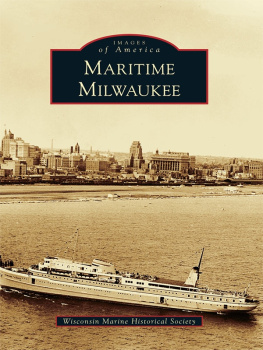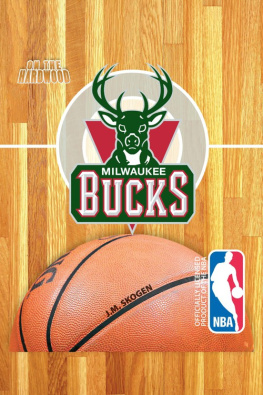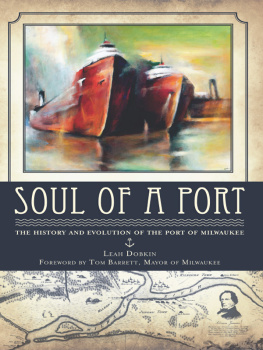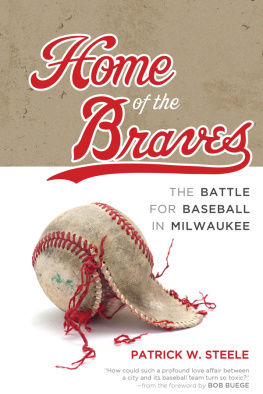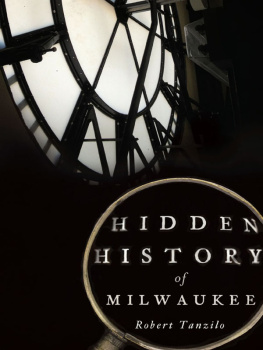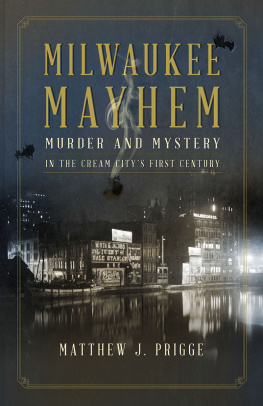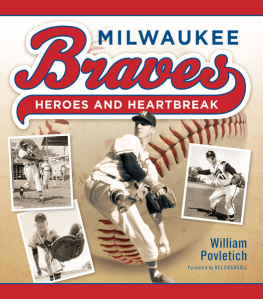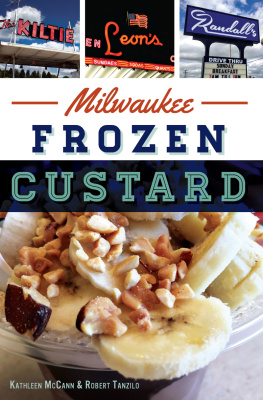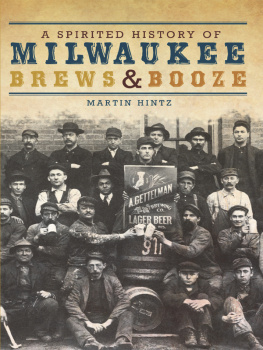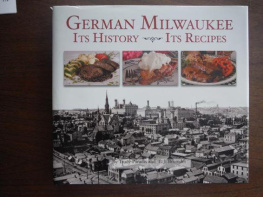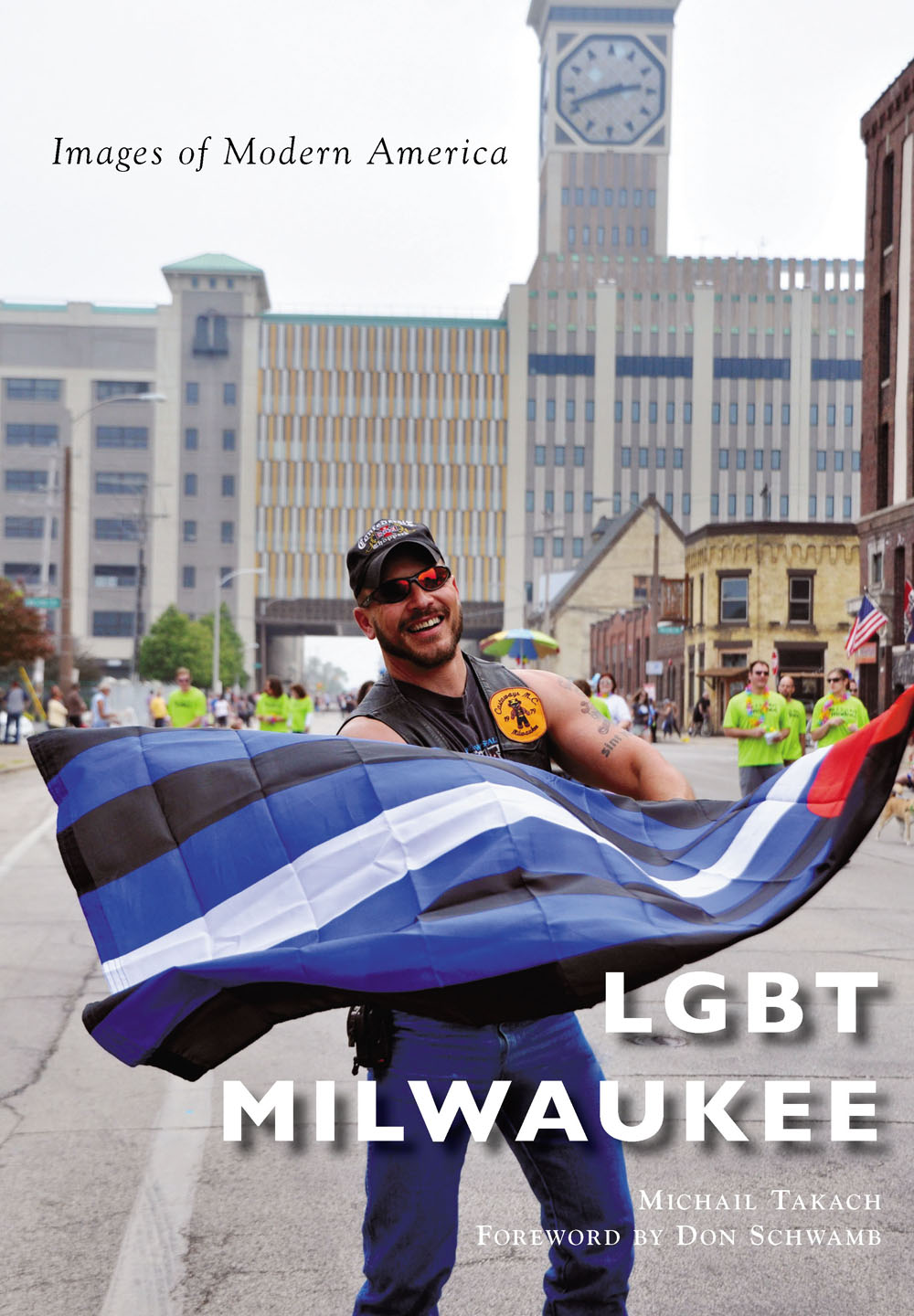
Images of Modern America
LGBT
MILWAUKEE
FRONT COVER: Rugged, resilient, festive, and forward, the parade goer in this photograph (Jeff Zimmerman) embodies the spirit of Milwaukee pride. (Kraco Photography.)
UPPER BACK COVER: In this image taken by the author during the 2014 Milwaukee Pride parade, the Love Wins banner commemorates the landmark Wisconsin Supreme Court ruling legalizing same-sex marriage in Wisconsin. (Milwaukee Pride, Inc.)
LOWER BACK COVER: (from left to right): This trio features Josie Carter and Jamie Gays, two well-known LGBT elders whose participation in the Wisconsin LGBT History Project, Wisconsin Transgender Oral History Project, and other initiatives provides priceless historical perspectives. (Wisconsin LGBT History Project.); This Is It is now the longest-running gay bar in Wisconsin. This photograph shows it in its earliest days, when there was still exterior signage announcing the bars location. (Wisconsin LGBT History Project.); B.J. Daniels, pictured with Tiffany Thomas, is a Milwaukee icon whose formative role in Milwaukees drag and design scene spans three decades. (Chris Corsmeier.)
Images of Modern America
LGBT
MILWAUKEE
MICHAIL TAKACH
FOREWORD BY DON SCHWAMB

Copyright 2016 by Michail Takach
ISBN 978-1-4671-1728-9
Ebook ISBN 9781439657324
Published by Arcadia Publishing
Charleston, South Carolina
Library of Congress Control Number: 2016932929
For all general information, please contact Arcadia Publishing:
Telephone 843-853-2070
Fax 843-853-0044
E-mail
For customer service and orders:
Toll-Free 1-888-313-2665
Visit us on the Internet at www.arcadiapublishing.com
Dedicated to Vanessa Alexander
CONTENTS
FOREWORD
Those of us who grew up during the days of Stonewall know that the LGBT community did not gain the understanding and acceptance of society by accident. A buildup of awareness turned the tide on the parts of both the LGBT community and straight society. Even in an unplanned, disorganized fashion, our community took steps to raise awareness of our normality and our suppressed rights.
The Wisconsin LGBT History Project attempts to capture that history to provide a better understanding of the evolution of the Milwaukee and Wisconsin LGBT communities and how that evolution has led to greater acceptance and understanding.
I established the Milwaukee LGBT History website (mkeLGBThist.org) in 2003, compiling the initial content from 2004 to 2006. Since that time, it has been in a state of continual growth, as we attempt to chronicle the history of Wisconsins LGBT community life along five major linesbusinesses, organizations, people, media, and events.
In addition to the website, a large exhibit is created each year for Milwaukees annual PrideFest celebration. This allows us to provide both a broad understanding of the community and focus on particular historical topics. These displays are also made available to other groups or events to exhibit throughout the year.
By buying this book, which reveals the early days of gay barshow they were established and what impact they hadyou help to support both the website and the PrideFest LGBT History Exhibit. This not only benefits the LGBT community, but also serves as a source of information for non-LGBT society to better understand the contributions and history of the LGBT community.
Aside from that, I know you will enjoy this book just for the anecdotes, the easy reading, and the historical photographs. Happy readingand enjoy this journey down the streets of old Milwaukee from an LGBT perspective!
Don Schwamb, founder and webmaster,
Wisconsin LGBT History Project
ACKNOWLEDGMENTS
Every year, my family made a holiday trip to the downtown convention center. Year after year, buildings vanished along State Street, until finally only one was left standing: the tiny little Mint Bar. And then, one year, the Mint Bar was gone, too. Thirty years later, there is no evidence it ever existed.
A strange sort of amnesia sets in when we lose all sense of a place. First, we memorialize; then, we misremember; and finally, we forget. Without storytellers to carry forth our history, our culture and community can be lost.
The AIDS crisis robbed the world of a generation who would have been those storytellers today. As such, special thanks are owed to those surviving LGBT elders who remained true to their hearts and their community and proudly share their stories today. Their commitment and courage to lead an authentic life has been an inspiration and is the driving force behind this book.
My greatest appreciation also goes out to Don Schwamb and the Wisconsin LGBT History Project. This grassroots, not-for-profit community project is devoted to documenting the evolving face of local gay, lesbian, bisexual, and transgender life, far above and beyond the contents of this publication. Many of the recollections and photographs presented here are courtesy of that website.
I want to extend a warm thank-you to Milwaukee Pride, Inc., whose mission to educate both the general community and the LGBT communities about needs, issues, and various aspects of LGBT culture provides a forum to celebrate the history and accomplishments of LGBT people, and whose network will prove vital to the reception of this book.
It is my sincerest hope that my book honors Milwaukee Prides noble work and is a lasting contribution to the histories it seeks to preserve and the stories it is dedicated to telling.
Special thanks are also due to Jamie Taylor; Bjorn Olaf Nasett; Melody Hendrickson; Larry Patterson; Bunny; Kate Sherry; Carole Pecor; Sheila Alex: Gregg Fitzpatrick; Jessica Daniels; Joe Brehm; June Brehm; George Prentice; Michael Horne; Bobby Tanzilo; Jen Pahl and the Milwaukee Public Library staff; Steve Shaffer and the Milwaukee County Historical Society staff; and Michael Doylen and the University of Wisconsin-Milwaukee Archives staff.
I send my sincere and humble thanks to Josie Carter and Jamie Gays, for everything you always were and will forever be. Your contributions to this book have been immeasurable.
Lastly, I want to thank my grandparents, great-grandparents, and other senior members of my family, with whom I spent countless childhood hours, for sparking my fascination for local history and keeping that reverence ablaze for four decades and counting.
INTRODUCTION
Society at large faces a practical problem. It must decide how it is going to deal with the homosexual in its midst. Whether or not there are more homosexuals today than there once were, they certainly are more visible.
Milwaukee Sentinel, February 2, 1965
Milwaukee seems an unlikely place for gay liberation to flower before Stonewall. After all, being homosexual was illegal here before the word homosexual even existed. Sodomy was criminalized in the Michigan Territory in 1836 and remained illegal until 1983. By the time of Oscar Wilde, Milwaukee was already a booming German Athens of industry, commerce, and a quarter million people.
Originally used to describe single-gender settings, homosexual aptly described male life in 1892. Milwaukee was a workingmans destination, with more single, able-bodied men arriving every day to make their fortunes. From rooming houses to railroads, from barrooms to bathhouses, and from factories to freighters, these workers lived in almost exclusively male settings.
For a homosexual man, it was actually easier to disappear into this hypermasculine culture than endure small-town family obligations. But, aside from the occasional Oscar Wilde Reading Room or the rare red-light alley bar, there were no defined spaces for gay men. Gay gatherings were behind locked doors in private homes or hotel rooms. Being homosexual meant living a mostly heterosexual life filled with desires that may be very, very discretely acted upon, but rarely, if ever, acknowledged.
Next page


